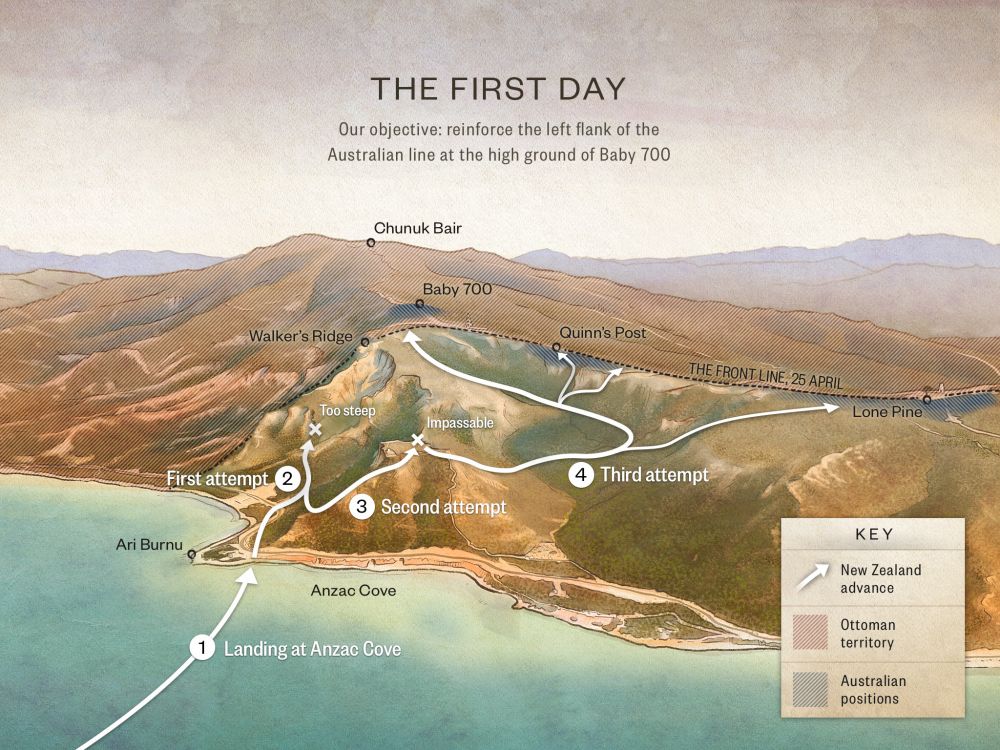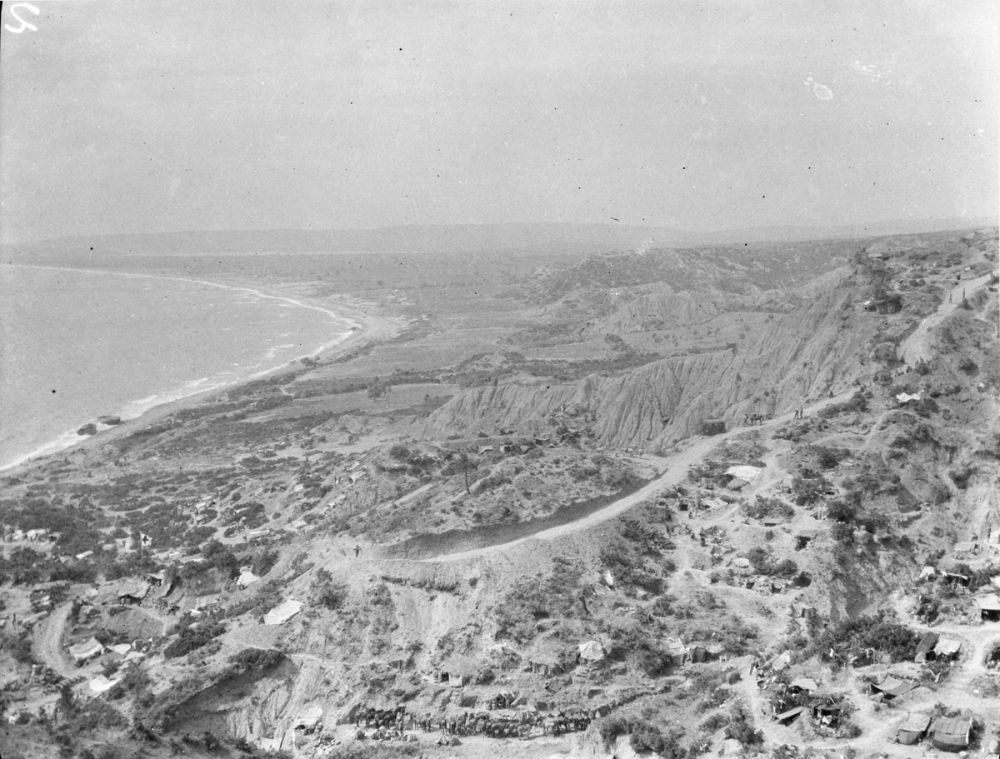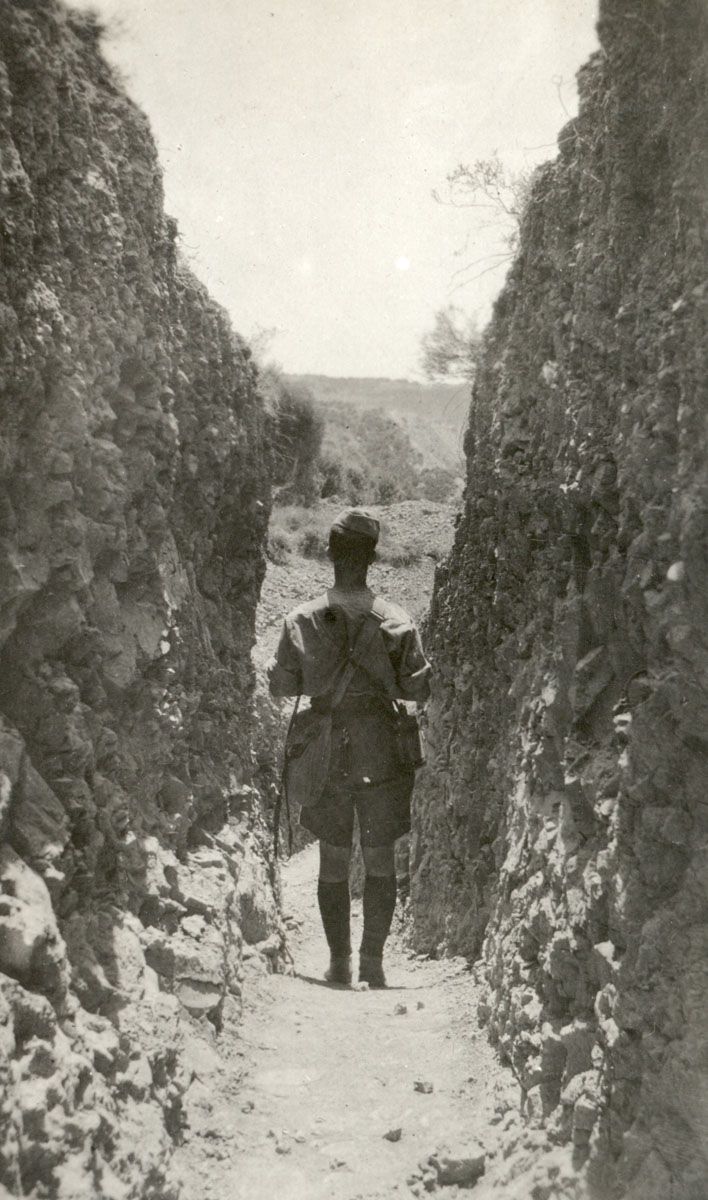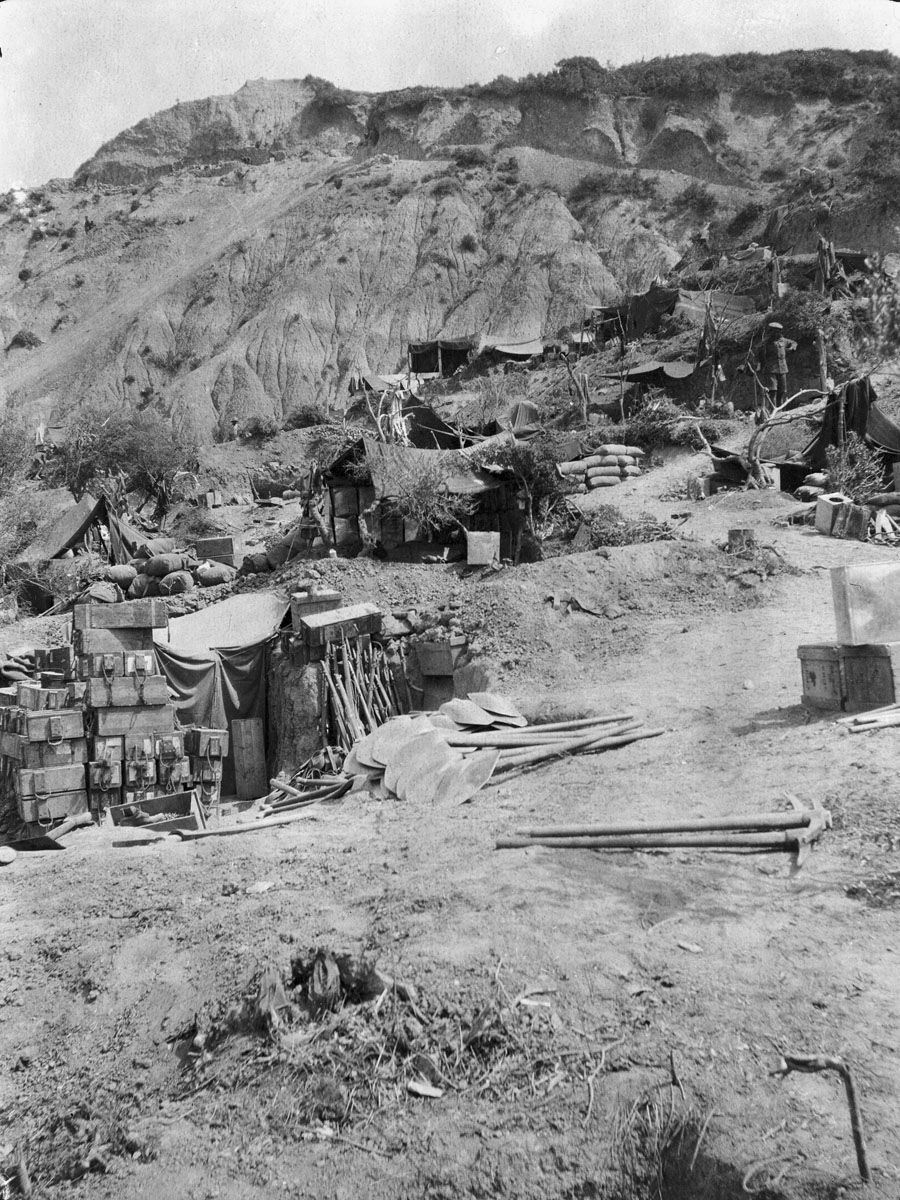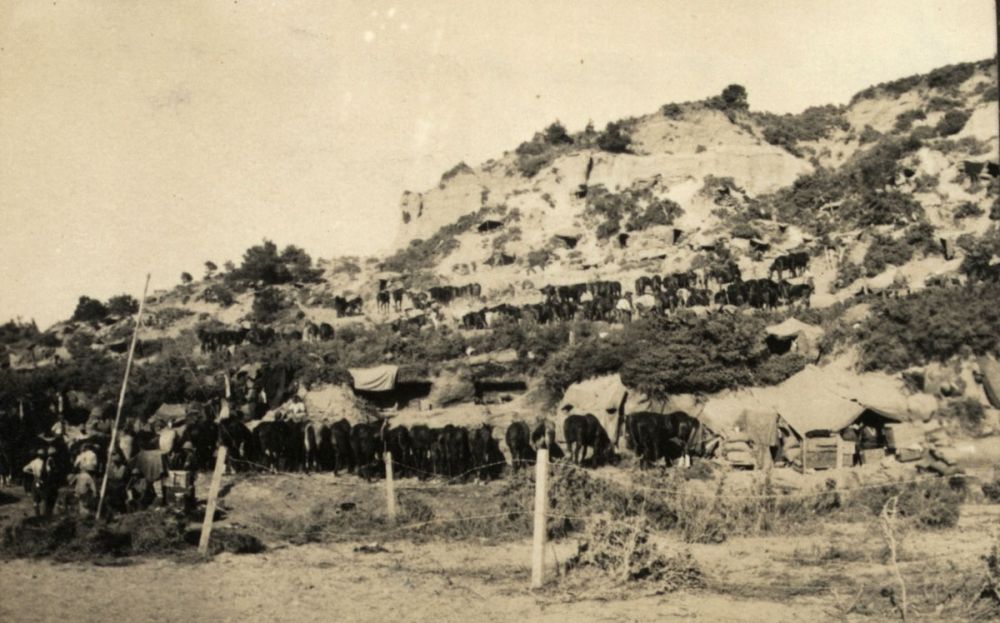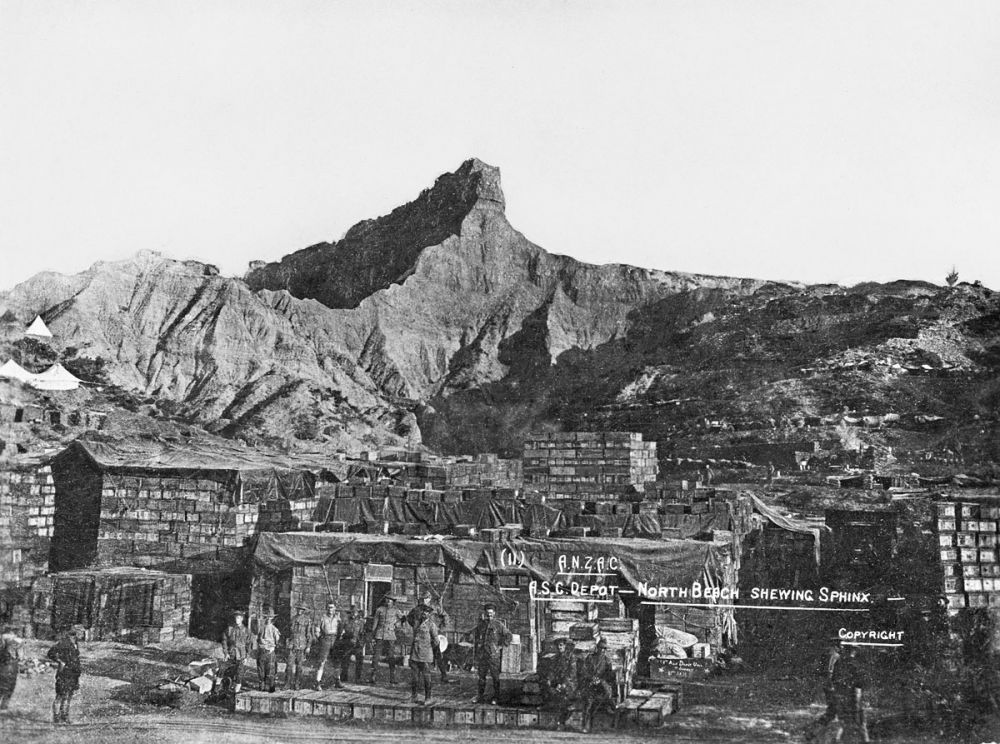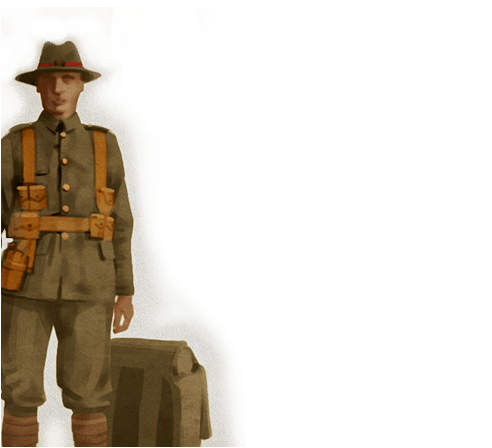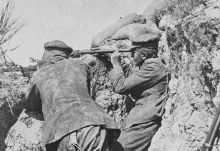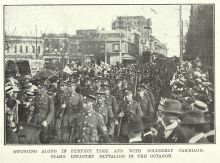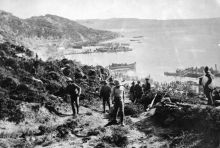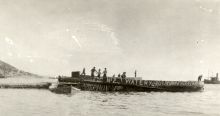The Outposts
You are looking down at what is now the Anzac Day commemoration site. It’s that open patch of grassland with the plinth along the beach.
If you look at that and from there look back up to the prominent clay headland to the right – that’s the Sphinx. To the left of the Sphinx you can see a ridge with a very bushy ledge on what is otherwise a series of clay slopes. That bushy ledge spur which runs down almost to the beach – with a cemetery marker at the bottom – is Walker’s Ridge.
The high ground at the top of the ridge, which is known as Russell’s Top, is the northern end of the ground that the Anzacs gained by nightfall on the 25th of April 1915. It became the main New Zealand defensive position, because the Ottomans held everything beyond that point.
Look back down to the beach. During the Gallipoli campaign, if you walked along the beach in daylight towards the cemetery at the base of Walker’s Ridge, you would probably be shot by an enemy sniper. Most of this area was in view of Turkish snipers in the hills. But it was important to have some outposts along the beach because the Turks might attack from the north or down the valleys from the east, so a number of fortifications called outposts were established. If you look north past the base of Walker’s Ridge and beyond the cemetery there’s another spur with a very distinctive clay slope. On top of the high ground further inland from there is the site of Number 1 Outpost. The Native Contingent was based at Number 1 Outpost after it arrived on the 3rd July 1915, and the area just below it where the Māori soldiers camped was known as the ‘Maori Pah’.
Beyond Number 1 Outpost is Number 2 Outpost and then Number 3 Outpost.
There were New Zealand soldiers at all three outposts. The Big Sap, was a communication trench running from Anzac Cove out to Number 2 Outpost, Until it was dug, you couldn’t get there during the day because of Turkish snipers.
The outposts were manned first by New Zealand infantry and then by the New Zealand Mounted Rifles who arrived in May without their horses, which had been left in Egypt. A lot of these guys were graziers from the Canterbury foothills and this country looked just like home.
The Anzacs were penned into the area around Anzac Cove and could not reach the high ground along the coast to the North. The New Zealanders at the outposts sent out patrols looking for a way round to the high ground, and out of that came the scheme for the big August offensive, which involved pushing up through the coastal foothills that you can see, towards Chunuk Bair.


